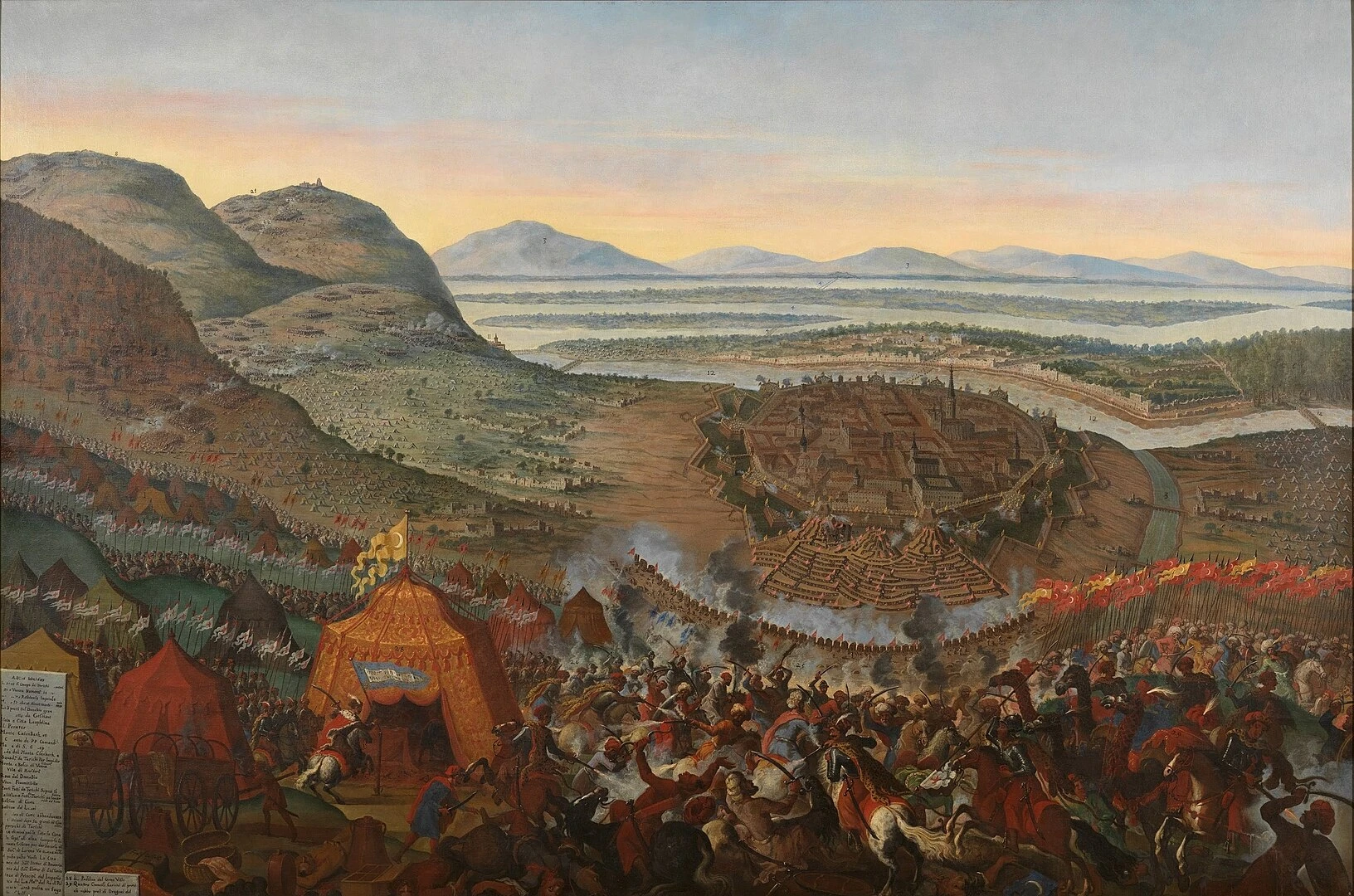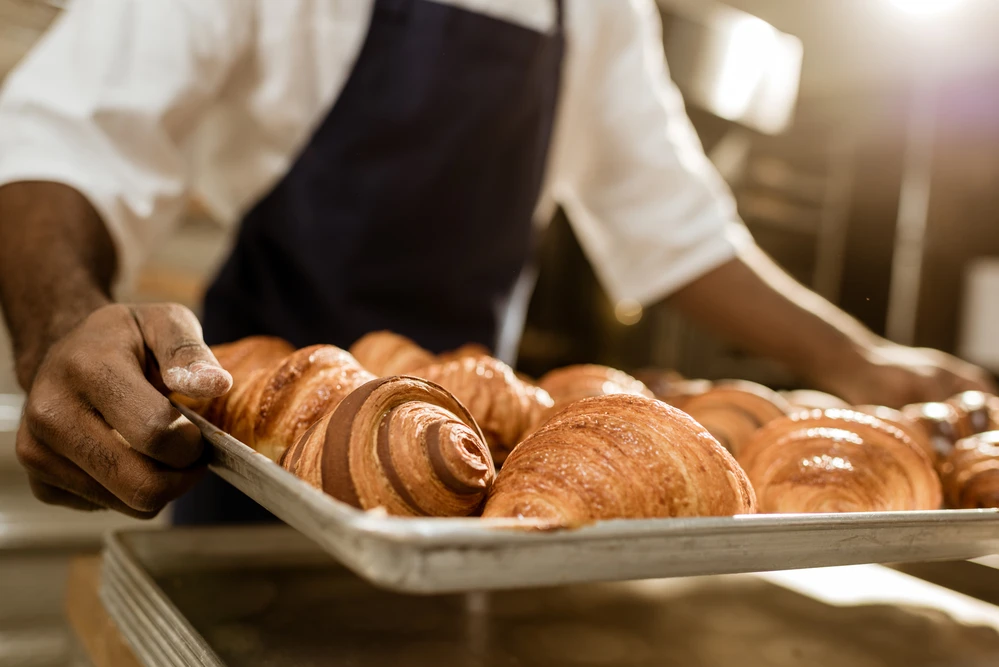A history of the croissant
He was born in Austria
The origins of the croissant probably lie in Eastern Europe. In Austria, the kipferl, which resembles the croissant but is made of brioche dough, has been around since at least the 13th century. It was the siege of Vienna in 1683 that marked the legendary birth of the shape, and hence the name, of the croissant.
The Turkish camp in front of the city walls during the siege of Vienna in 1683. Painting chosen by monsieurdefrance: By Frans Geffels - Badisches Landesmuseum, Public domain, https://commons.wikimedia.org/w/index.php?curid=1767085
That year, the Ottoman Turks made a major push into Western Europe and laid siege to the city of Vienna, capital of the Austrian Empire.While the attackers were digging mines under the ramparts, an Austrian baker named Adam Spiel heard their blows and immediately warned the Viennese military , who discovered that the Turks were indeed digging under the ramparts to enter the city.A sortie was launched at dawn, which so surprised the Ottoman attackers that they were totally routed, abandoning their camp and everything in it, including camels (which amazed the inhabitants of Vienna, who had never seen one before) and mocha coffee, which Viennese pastry chefs had the idea of mixing with cream, inventing Viennese coffee.
The bakers, proud that one of their number had prevented the city from being taken, began making crescent-shaped buns, so that the Viennese could eat the Turkish crescent just as the Austrian soldiers had eaten their enemies .
A recipe completely changed by Parisian bakers.
Fresh croissants! Photo chosen by monsieurdefrance.com: ArturVerkhovetskiy via depositphotos.com
Legend has it that Queen Marie-Antoinette, who was Austrian, brought the delicacy of Austrian croissants with her when she married the future Louis XVI. But this is just a legend. The origins of the French croissant lie in Paris. It was there, on rue de Richelieu (Paris 1), that two Austrians opened a patisserie in 1830. Their names were August Zang and Ernst Schwarzer. Gifted, they made their pastries fashionable, and Parisians began to call them "viennoiseries" because of their authors' Austrian origins. A little later, in the 19th century, a number of French bakers came up with the idea of taking the original shape of the Viennese croissant, but completely changing the recipe by replacing the original brioche dough with puff pastry, so popular with the French since its invention, attributed to painter Claude Gellée (known as "le Lorrain") in the 17th century. With puff pastry, the Viennese croissant became the French croissant: golden, light and delicious. The first printed recipe dates from 1905, and the recipe for the butter croissant (so much better!) from 1920. So it was only in the 20th century that the croissant became part of French life.
Croissants are the darling of French breakfasts at weekends, and the star of breakfasts in the cafés and brasseries of our big cities, accompanying coffee or a good hot chocolate. Photo chosen by monsieurdefrance.Com elena_n / via depositphotos.
The croissant in France
Today, it's France's favorite viennoiserie, just ahead of pain au chocolat (or chocolatine if you're from the south of France). 1,800,000,000 are produced every year! 3 out of 4 French people eat them regularly . 98% of them think it's a symbol of French culture, 97% take pleasure in tasting one, and 85% prefer it, with good reason, from the baker. For 75% of French people (who sometimes get up early to pick them up fresh from the corner bakery), it's the delicacy of choice for weekend breakfast.
How to choose a croissant?
Prefer it to butter - with 21% lipids, the croissant is not at all a slimming product! - golden but not shiny. If it's too shiny, it's because it's been glazed. It's excellent if the crumb on the inside of the horn follows the movement when you pull to cut the croissant in half. There are variations, such as the almond croissant (often filled with chocolate).
Sorry, our translator isn't here. He went off to the local café for a café-croissant and we haven't seen him since. We're waiting for him. If you see him, tell him to come and see us!








